Queensland Higher Mass Limits Declaration Operator’s Guide
Queensland Higher Mass Limits Declaration Operator’s Guide
National
Heavy
Vehicle
Regulator
The Queensland Higher Mass Limits Declaration 2024 (No.1) provides access to stated areas and routes for Higher Mass Limits (HML) vehicles operating in Queensland.
Note: This instrument does NOT exempt these heavy vehicles from other requirements of the Heavy Vehicle National Law (HVNL) including other dimension requirements and mass requirements.
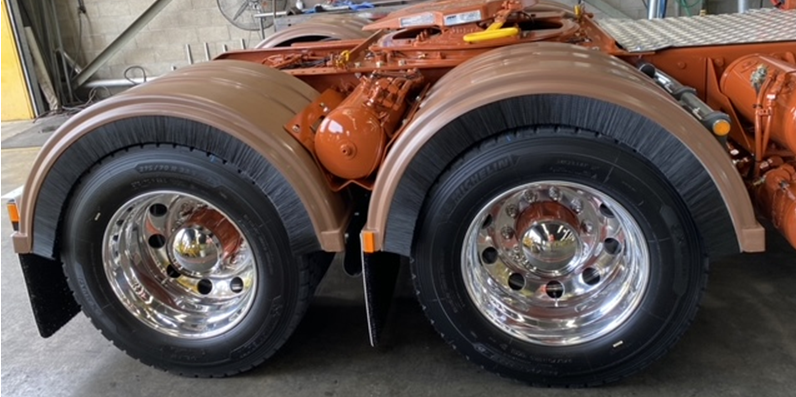
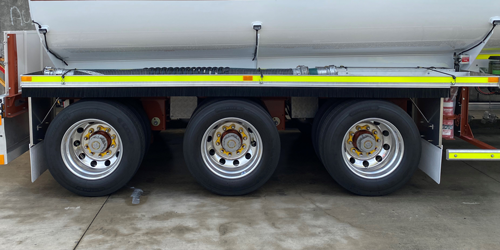
| Specifications | |
|---|---|
| Gazette Notice: | C2024G00079 |
| Starts: | 10 February 2024 |
| Expires: | 9 February 2029 |
| Vehicle types: | HML heavy vehicles, rigid truck, prime mover and semitrailer, B-double, Type 1 road train, Type 2 road train |
| Exemptions: |
Higher Mass Limits (HML) |
| Law: | HVNL, MDL |
| Coverage: | QLD |
| To be carried: | No |
- Overview
- Definitions
- Eligible
Vehicles - Conditions
- Network and
Mapping - Related
Notices - Resources
- Changes and
Updates
Overview
The information in this Operator’s Guide is intended to do two things:
- Explain how the Queensland Higher Mass Limits Declaration 2024 (No.1) (Declaration) operates, to assist in complying with it. It is important to remember this Operator’s Guide is instructional only and it is the Declaration that provides the exemption or authorisation. If there is a difference or misunderstanding between the Operator’s Guide and the Declaration, the Declaration has priority and must be followed. The only exceptions are the requirements or conditions set out in the ‘Network and Mapping’ section explained below.
- Provide additional information referred to in the network requirements of the Declaration. This includes links to network maps and other information such as vehicle, travel and road conditions. Networks and their conditions published in the ‘Network and Mapping’ section of this Operator’s Guide are not general advice and must be treated as conditions of the Declaration.
Please read the Declaration and this Operator's Guide together. To download or print this guide, use the print or PDF buttons on the top right of this page
About this Declaration
Higher Mass Limits (HML) is a mass exception allowing an increased mass limit to the following single axle and axle groups fitted with road-friendly suspension on eligible vehicles in the Declaration operating in Queensland.
Application
This application only applies to the extent to which conditions are granted.
This Declaration applies to an eligible HML heavy vehicle that complies with the requirements of Schedule 5 of the Heavy Vehicle (Mass, Dimension and Loading) National Regulation (MDL).
Note: Other mass and dimension limits in the MDL apply.
Definitions
Unless otherwise stated, words and expressions used in this Operator’s Guide have the same meanings as those defined in the HVNL and the Declaration.
|
Term |
Definition |
|---|---|
|
Access Conditions Guide |
Queensland Access Conditions Guide published by the Queensland Department of Transport and Main Roads. |
|
ADR |
Australian Design Rules. |
|
Certified road-friendly suspension system |
A suspension system certified as a road-friendly suspension system by the Vehicle Safety Standards Branch of the Department of Infrastructure, Transport, Regional Development, Communications and the Arts in accordance with Vehicle Standards Bulletin (VSB) No. 11 (revised edition) published by that branch in July 2004 and as amended from time to time. |
|
General access vehicle (GAV) |
A heavy vehicle that complies with mass and dimension requirements and does not require a notice or permit to operate on the road network. GAVs have general access to the road network subject to the operation of the Heavy Vehicle National Law (HVNL) and the road rules of the relevant participating jurisdiction. |
|
Intelligent Access Program |
Approved intelligent transport system of that name administered by the Queensland Department of Transport and Main Roads. |
|
Network |
A map, list or database, presented electronically or otherwise, that represents the stated areas and stated routes authorised under this Declaration. |
|
Prescribed dimension requirement |
A dimension requirement prescribed by the MDL. |
|
Prescribed mass requirement |
A mass requirement prescribed by the MDL. |
|
Tri-drive prime mover |
A prime mover with a drive axle group consisting of three axles, all of which are in contact with the road. |
Eligible vehicles
Vehicles and combinations eligible to operate at HML in Queensland are shown in Table 1.
The images below are for illustration purposes only.
In addition to the heavy vehicles set out below, the following are also eligible to operate under the Declaration:
- A tri-axle dolly or tandem axle semitrailer.
| Description and images of eligible vehicles |
|---|
|
Rigid truck (no trailer)
|
|
Prime mover and semitrailer
|
|
B-doubles that meet the requirement of National Class 2 B-double Authorisation Notice 2024 (No.1)
|
| Type 1 Road Trains up to 36.5m in length and meet the requirements of the National Class 2 Road Train Authorisation Notice 2025 (No.2) |
|
B-triple (Modular) up to 35m
|
|
B-triple up to 35m
|
|
A-double up to 36.5m |
|
AB-triple up to 36.5m
|
| Type 2 Road Trains up to 53.5m in length and meet the requirements of the National Class 2 Road Train Authorisation Notice 2025 (No.2) |
|
AB triple up to 44.0m |
|
Rigid truck towing two trailers up to 47.5m |
|
A-triple up to 53.5m |
|
BAB quad up to 53.3m |
|
ABB quad up to 53.5m |
Eligible axle groups
Under the Declaration, HML applies to the following heavy vehicle axle groups in Queensland:
- a 6-tyred tandem axle group
- an 8-tyred tandem axle group
- a tri-axle group
Note: In Queensland, tri-axle drive groups (drive axle group with more than two axles) are ineligible under the Declaration. Operators will need to apply for a permit for all vehicle types with a tri-axle drive group, including rigid and articulated configurations.
For information on how to apply for an HML permit, visit the Higher Mass Limits permit page.
Excluded vehicles
This Declaration doesn’t apply to:
- heavy vehicles operating under Performance Based Standards (PBS) scheme, including quad-axle combinations;
- a bus.
Conditions
Declarations are subject to various conditions to ensure public safety, protect assets and prevent adverse impacts on the community, such as noise, emissions and traffic congestion. See the sections below for specific conditions related to this Declaration.
Mass limits - Click to expand
Axle groups and mass limits
The maximum mass allowable axle or axle group mass limit under the Declaration is summarised in Table 2. To be eligible to operate at Concessional Mass Limits (CML) and Higher Mass Limits (HML), the axle group must be eligible for the GML shown in Table 2. The actual mass you can carry on an axle group will depend on whether the vehicle operates at general or restricted access and the relevant axle spacing mass limits table.
| Axle group/tyres | Axle | Axle/vehicle requirements | Tyre section width | Mass limit (t) - GML | Mass limit (t) - CML | Mass limit (t) - HML |
|---|---|---|---|---|---|---|
| Steer axle |  |
Default limit | N/A | 6.0 | 6.0 | 6.0 |
| Complying steer axle | Suitability rated | 6.5 | 6.5 | 6.5 | ||
| Road train steer axle | 295–375 mm | 6.5 | 6.5 | 6.5 | ||
| Road train steer axle | At least 375 mm | 7.1 | 7.1 | 7.1 | ||
| Single axle |  |
Single tyres | Less than 375mm | 6.0 | 6.0 | 6.0 |
| Single tyres | 375–450mm | 6.7 | 6.7 | |||
| Single tyres | At least 450mm | 7.0 | 7.0 | 7.0 | ||
 |
Dual tyres | N/A | 9.0 | 9.0 | 9.0 | |
| Twin-steer axle group - Single tyres | 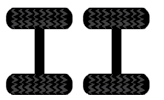 |
Non-load-sharing suspension system | N/A | 10.0 | 10.0 | 10.0 |
| Load-sharing suspension system | N/A | 11.0 | 11.0 | 11.0 | ||
| Tandem axle group |  |
Single tyres on all axles | Less than 375mm | 11.0 | 11.5 | 11.0 |
| Single tyres on all axles | 375–450mm
|
13.3 | 13.8 | 13.3 | ||
| Single tyres on all axles | at least 450mm | 14.0 | 14.5 | 14.0 | ||
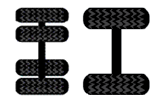 |
Single tyres on one axle and dual tyres on the other axle | N/A | 13.0 | 13.5 | 14.0 | |
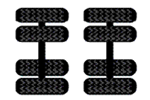 |
Dual tyres on all axles | N/A | 16.5 | 17.0 | 17.0 | |
| Tri-axle group | 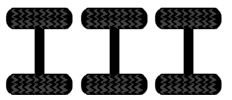 |
Single tyres on all axles | Single tyres less than 375mm | 15.0 | 15.5 | 15.0 |
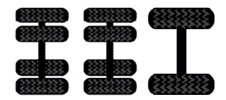 |
Combination of single and dual tyres | Single tyres less than 375mm | 15.0 | 15.5 | 15.0 | |
 |
Single tyres on all axles | At least 375 mm | 20.0 | 21.0 | 22.5 | |
 |
Combination of single and dual tyres | Single tyres at least 375 mm | 20.0 | 21.0 | 22.5 | |
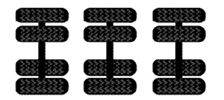 |
Dual tyres on all axles | N/A | 20.0 | 21.0 | 22.5 |
Restricted axles
The following axle groups are restricted in the Declaration:
- Tri-axle drive groups – Prohibited on any vehicle operating under this Declaration. Operators with a tri-drive prime mover in their combination require a permit to operate.
- Quad-axle groups - Prohibited on any vehicle operating when on state-controlled roads in Queensland.
One-tonne mass exception
An eligible combination with a tri-axle group operating under this Declaration can apply the one-tonne tri-axle mass exception (1TMTA).
1TMTA allows increased mass on tri-axle groups so they can be loaded up to 1t above the standard tri-axle group 20t GML. Any additional mass loaded onto each tri-axle group is offset onto another non-steer axle or other axle groups.
The 1TMTA does not permit any increase to a vehicle’s maximum (total) mass but gives more flexibility in how mass may be distributed across axle groups.
1TMTA only applies where the approved routes covered by this Declaration are also approved under the 1TMT network. Refer to the Queensland Government Globe to check approved roads.
For more information, see 1-Tonne Tri-Axle Mass Transfer Allowance information sheet.
Other conditions and additional information
Third party approvals
Gazette notices, permits and some jurisdictional laws may require third parties and other entities to provide permission for a vehicle to travel if it exceeds certain mass or dimension limits.
Operators must secure all approvals from third parties such as electricity/utility companies, rail authorities and other third parties as part of their heavy vehicle operations.
For more information, visit the Third party approvals page.
Complying with the HVNL
Unless otherwise exempted by the Notice or this Operator's Guide, operators must ensure their vehicle or combination complies with ADRs, HVNL, MDL and VS Regulation.
Using or permitting another person to use a defective heavy vehicle or a heavy vehicle with unapproved modifications on a road may be an offence.
Failure to comply may result in the driver and/or operator being liable for an offence. Penalties can include infringement notices or prosecution.
Chain of Responsibility (CoR)
Under the HVNL, every party in the Chain of Responsibility (CoR) has a positive duty to ensure the safety of their activities in relation to a heavy vehicle. This duty, known as the “primary duty”, applies to the scheduling, loading and consigning of a vehicle, as well as to its operation on a road.
Safety is broader than the safety of drivers and other road users. It also includes protection of road infrastructure, preventing damage to other vehicles or property, and minimising environmental harm. Substantial penalties may be imposed upon parties who breach this obligation and upon their executives.
For more information on your CoR obligations visit Chain of Responsibility on the NHVR website.
Our Regulatory Advice offers guidance, tips and tools for managing a range of heavy vehicle safety risks.
Loading requirements
To meet the loading requirements, the heavy vehicle must be loaded:
- in a way that load placement does not make the heavy vehicle unsafe or unstable
- in a way that the load is not likely to fall or be dislodged from the vehicle
- using an appropriate system to restrain the load.
Visit the NHVR loading page for more information on load requirements.
The requirement to carry the Declaration
Drivers do not need to carry a copy of the Declaration.
Network and mapping
For the purposes of s142 of the HVNL, an area or route specified in the 'Network & Mapping' section of this Operator's Guide is a stated area or route to which this Declaration applies. In addition to complying with the conditions stated in this Operator's Guide, operators must ensure compliance with the specific road manager access requirements set out below or in network maps.
In this tab, you will find the approved routes authorised under the Declaration. There may also be network conditions pursuant to the stated areas and routes under the Declaration. Network conditions relate to road and travel conditions that are not contained within the Declaration.
National Network Map
This Declaration may refer to state or territory government websites for the publication of networks. From 20 December 2023, certain authorised heavy vehicle road network maps for the Australian Capital Territory, New South Wales, Queensland, South Australia, and Victoria are published by the National Heavy Vehicle Regulator, through the NHVR National Network Map. Additional information and guidance can be found on the National Network Map webpage.
Approved routes covered by the Declaration - Click to expand
Approved routes covered by the Declaration
Eligible vehicles complying with the conditions of the Declaration are authorised to operate under approved HML networks under the Declaration. These networks are published and maintained by the Queensland Government and located on the Queensland Globe website.
Table 3 below, provides an overview of the approved routes in the Declaration.
|
Vehicle category |
Routes or areas authorised for HML on the National Network Maps |
Routes or areas authorised for HML on the Queensland Globe |
|---|---|---|
|
General access vehicle |
A general access vehicle may only use routes approved for HML. |
|
|
B-double |
A B-double may use the routes and areas that are approved for both:
|
A B-double may use the routes and areas that are approved for both:
|
|
Type 1 road train |
A Type 1 road train may use the routes and areas that are approved for both:
|
A Type 1 road train may use the routes and areas that are approved for both:
|
|
Type 2 road train |
A Type 2 road train may use the routes and areas that are approved for both:
|
A Type 2 road train may use the routes and areas that are approved for both:
|
Additional 500 metres approved HML access
An eligible vehicle operating under the Declaration may operate up to a radial distance of 500 metres from the National Road Network onto an approved network listed in Table 4.
The Queensland National Road Network is located on the Department of Infrastructure, Transport, Regional Development and Communications website.
There are two maps for Queensland: National Land Transport Network Road Corridors – Queensland and Urban National Land Transport Network Road – Brisbane.
| Configuration | Routes or areas authorised for HML on the National Network | Approved area/routes on the Queensland Globe |
|---|---|---|
| General access vehicle (GAV) |
An eligible GAV may operate up to a radius of 500 metres from the National Road Network onto a connecting, approved 23m B-double network of this Notice. |
An eligible GAV may operate up to a radius of 500m from the National Road Network onto a connecting:
|
|
23m B-double |
An eligible 23m B-double may operate up to a radius of 500 metres from the National Road Network onto a connecting, approved 23m B-double network of this Notice. |
An eligible 23m B-double may operate up to a radius of 500m from the National Road Network onto a connecting:
|
|
25–26m B-double |
An eligible 26m B-double may operate up to a radius of 500 metres from the National Road Network onto a connecting, approved 25-26m B-double network of this Notice. |
An eligible 26m B-double may operate up to a radius of 500m from the National Road Network onto a connecting:
|
|
Type 1 road train |
An eligible Type 1 road train may operate up to a radius of 500 metres from the National Road Network onto a connecting, approved Type 1 or 2 road train network of this Notice. |
An eligible Type 1 road train may operate up to a radius of 500m from the National Road Network onto a connecting:
|
|
Type 2 road train |
An eligible Type 2 road train may operate up to a radius of 500 metres from the National Road Network onto a connecting, approved type 2 road train network of this Notice. |
An eligible Type 2 road train may operate up to a radius of 500m from the National Road Network onto a connecting:
|
Specified road manager network requirements
The following section outlines specific road manager network requirements under the Declaration, including route conditions, restrictions, and non-participating road managers.
Road manager network requirements in this section may change from time to time and should be reviewed regularly to ensure compliance.
For further information on how to comply with a requirement, please contact the relevant road manager.
Road managers may publish specific route conditions and restrictions on the approved network map. These must be complied with in addition to any route requirements outlined in this Operator's Guide. If a condition listed in any section of this Operator's Guide conflicts with a route condition or restriction published on an approved network map, the more restrictive requirement applies.
Intelligent Transport Systems - Click to expand
Intelligent Transport System (ITS)
Vehicles must have an Intelligent Transport System (ITS) approved by Transport Certification Australia (TCA).
Eligible vehicles must be enrolled in, and comply with, one of the following approved ITSs, installed for the purpose of telematics-monitoring the relevant eligible vehicle operating under the Declaration:
- For vehicles enrolled from 1 December 2022 – Telematics Monitoring Application (TMA)
- For vehicles enrolled before 1 December 2022 – TMA or the Intelligent Access Program (IAP).
Note: The option to comply using IAP will be removed from 1 June 2024 –TMA will be the only option from that date.
The following conditions of the Declaration are ITS conditions:
- any condition relating to the road network in return for monitoring, by mass and configuration.
- any condition relating to stated areas or routes to which the authority applies, including any relating to speed or time of travel.
The contact points for IAP are:
- the Approved Service Provider (ASP); or
- TMR (as a delegate for the NHVR):
- Telephone – 1300 753 427 (1300 QLD IAP)
- Email – iapadmin@tmr.qld.gov.au
The contact point for TMA is the operator’s ASP.
Self-Declaration Input Device
In Queensland, operators can elect to install a Self-Declaration Input Device (SDID) that sends information to an ASP for IAP or TMA.
The SDID requires the driver (or transport operator) to enter the:
- vehicle’s configuration
- number of axle in the configurations
- total mass of the vehicle or combination, including the mass of the hauling unit and any attached trailers, plus any load on board the vehicle or combination.
This information must be declared at the following times:
- at the start of the journey
- whenever there is a change in the vehicle configuration
- whenever there is a change in the total mass of the vehicle or combination, including the mass of the hauling unit and any attached trailers, plus any load on board the vehicle or combination
- whenever prompted by the SDID, if a SDID is available in the vehicle.
Mass declaration requirements must be made through:
- the SDID in the vehicle that is certified by TCA and linked to the ASP; or
- an alternative method approved and certified by TCA.
Malfunctions
The operator must take all reasonable steps to ensure the vehicle’s driver is aware of their obligation to report to the operator any malfunction of the ITS fitted to the vehicle. The driver must report malfunctions before a journey begins or as soon as practicable after becoming aware of the malfunction.
For IAP, report the malfunction to both:
- the ASP, to develop a rectification schedule if applicable; and
- TMR (as a delegate for the NHVR):
- Telephone – 1300 753 427 (1300 QLD IAP)
- Email – iapadmin@tmr.qld.gov.au
For TMA, report the malfunction to the ASP, who will then report the malfunction to TCA.
If an ITS malfunction is not rectified either as soon as practicable or as determined by the NHVR or its delegate, the vehicle is no longer eligible to be operated under the Notice.
Traffic advisory services - Click to expand
Prior to commencing any journey, operators should review traffic alerts, road closures, travel delays, and other traffic advisory information for participating jurisdictions.
Table 5 provides details and links to official traffic advisory services for each participating jurisdiction. For more information about a particular service, contact the relevant jurisdiction or department via the contact details listed on the service webpage.
|
Jurisdiction |
Website |
Purpose |
|---|---|---|
| Queensland | QLD Traffic | View live information about incidents and changes in Queensland traffic conditions, including outback road conditions. |
Applying for a permit - Click to expand
Access permit applications are required for heavy vehicles that don’t comply with the conditions set out in a notice and when accessing routes that aren’t covered on an approved network.
The following pages provide useful information and resources for submitting access permit applications:
- Do I need a permit?: Information and resources for determining whether a road access permit, or a Notice is required to operate on Australian roads.
- Access permit application process: Information, resources, and instructions for submitting a valid access permit application.
Related notices
In this tab, you will find a list of national, state and territory notices related to the Queensland Higher Mass Limits Declaration 2024 (No.1).
A related notice or declaration may be comparable with this Declaration or provide alternatives for operators to find the appropriate notice or declaration under which to operate.
Related national notices
| Jurisdiction | Notice |
|---|---|
| National |
National Class 2 B-double Authorisation Notice 2024 (No.1) Authorises access for Class 2 heavy vehicles that are B-doubles. National Class 2 Road Train Authorisation Notice 2025 (No.2) Provides complying road trains access in New South Wales, Queensland, South Australia and Victoria. The national notice introduces simplified and more nationally consistent conditions for road trains, supporting more seamless cross-border access. National Class 2 4.6m high and/or 25m Long Vehicle Carrier Authorisation Notice 2025 (No.1) Authorises the use of Vehicle Carriers from 4.3 to 4.6 metres in height, or from 19 to 25 metres in length, or both, in stated areas or on stated routes, during stated hours of stated days and states the conditions under which these Vehicle Carriers may be used. National Class 2 Heavy Vehicle 4.6m High Livestock Carrier Authorisation Notice 2025 (No.1) Authorises the use of Livestock Carriers from 4.3 to 4.6 metres in height in stated areas or stated routes, during stated hours of stated days and to state the conditions under which these Livestock Carriers may be used. National Class 3 Drought Assistance Dimension Exemption Notice 2025 (No.2) Exempts eligible vehicles from complying with certain dimension requirements when transporting specified commodities for consumption by livestock in drought-affected areas. Exempts a stated category of Class 3 heavy vehicles from the height limit stated in section 8 of Schedule 6 of the Heavy Vehicle (Mass, Dimension and Loading) National Regulation. Please note the following supporting document for this Notice: Exempts a stated category of Class 3 heavy vehicles from the width limit in section 7(1) of Schedule 6 of the Heavy Vehicle (Mass, Dimension and Loading) National Regulation. National Class 3 Rear Overhang Dimension Exemption Notice 2024 (No.2) Grants exemptions from dimension requirements for a Class 3 heavy vehicle that has a forklift mounted to its rear. National Class 3 Road Train Prime Mover Dimension and Mass Exemption Notice 2022 (No.1) Provides length exemption to eligible combinations under the Notice. It also provides flexibility for operators of road train prime movers to continue their travel when decoupling from a road train combination and to access networks when not operating as a road train. National Class 3 Vehicle Carrier Exemption Notice 2025 (No.1) Exempts the stated categories of Class 3 heavy vehicles from the stated dimension requirements of the Heavy Vehicle (Mass, Dimension and Loading) National Regulation specified in the Notice, subject to specified conditions. |
Related state and territory notices and declarations
| Jurisdiction | Notice |
|---|---|
| Australian Capital Territory |
Australian Capital Territory Higher Mass Limits Declaration 2021 (No.1) Authorises eligible heavy vehicles to operate on Higher Mass Limits (HML) on stated areas and routes in the Australian Capital Territory. |
| New South Wales |
New South Wales Higher Mass Limits Declaration 2025 (No.1) Authorises the use of certain categories of heavy vehicles under higher mass limits on stated areas and routes and states the intelligent access conditions under which these heavy vehicles may be used. Please note the following supporting document for this Notice: |
| South Australia |
South Australian Class 3 Road Friendly Suspension Mass Exemption Notice 2023 (No.1) Exempts certain heavy vehicles and combinations fitted with certified Road Friendly Suspension from mass requirements set out in the Heavy Vehicle (Mass Dimension and Loading) National Regulation, allowing operation at masses that are equivalent to Higher Mass Limits under the Heavy Vehicle National Law (HVNL). This Notice replaces the South Australia Class 3 (Application of Higher Mass Limits) Mass Exemption Notice. |
| Tasmania |
Tasmania Higher Mass Limits Declaration 2021 (No.1) Authorises the use of certain categories of heavy vehicles under higher mass limits on stated areas and routes in Tasmania. |
| Victoria |
Victoria Class 3 Road Friendly Suspension Mass Exemption Notice 2024 (No.1) Exempts certain heavy vehicles fitted with certified road friendly suspension from mass requirements set out in the Heavy Vehicle (Mass Dimension and Loading) National Regulation. |
Resources
All information about this Declaration is contained in this Operator’s Guide. Please refer to the tabs for more information about this Declaration, or contact us with your specific questions.
Note: If you have any feedback on the information provided please contact us at info@nhvr.gov.au
Participating jurisdiction heavy vehicle resources
For more information about operating a heavy vehicle in participating jurisdictions, refer to the following sites:
Changes and updates
| Date | Summary | Links to resources and communications |
|---|---|---|
| 10 February 2024 | Queensland Higher Mass Limits Declaration 2024 (No.1) commenced. | C2024G00079 |
| 05 December 2022 | Publication of the Queensland Higher Mass Limits Declaration 2022 which included an amendment to the Intelligent Access System conditions in section 11 for Telematics Monitoring Application. | |
| 10 February 2019 | Publication of the Queensland Higher Mass Limits Declaration 2019 (No.1) replaced the Queensland Form 10 Guideline for Higher Mass Limits for Vehicles with Road Friendly Suspensions. |

www.nhvr.gov.au
E info@nhvr.gov.au
P 13 NHVR (136 487)
PO Box 492, Fortitude Valley QLD 4006
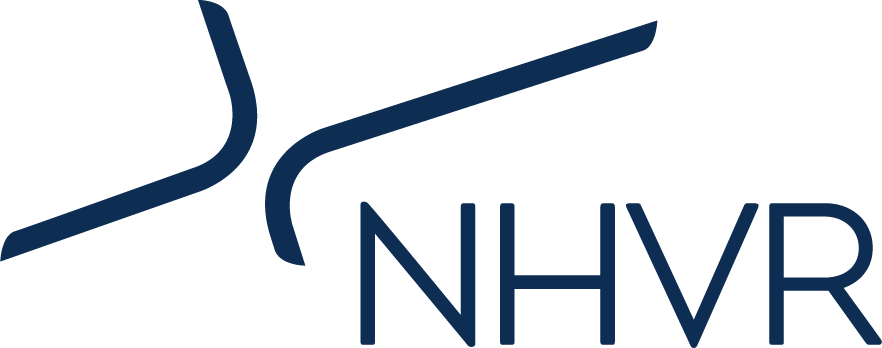
 Accessibility tools
Accessibility tools





